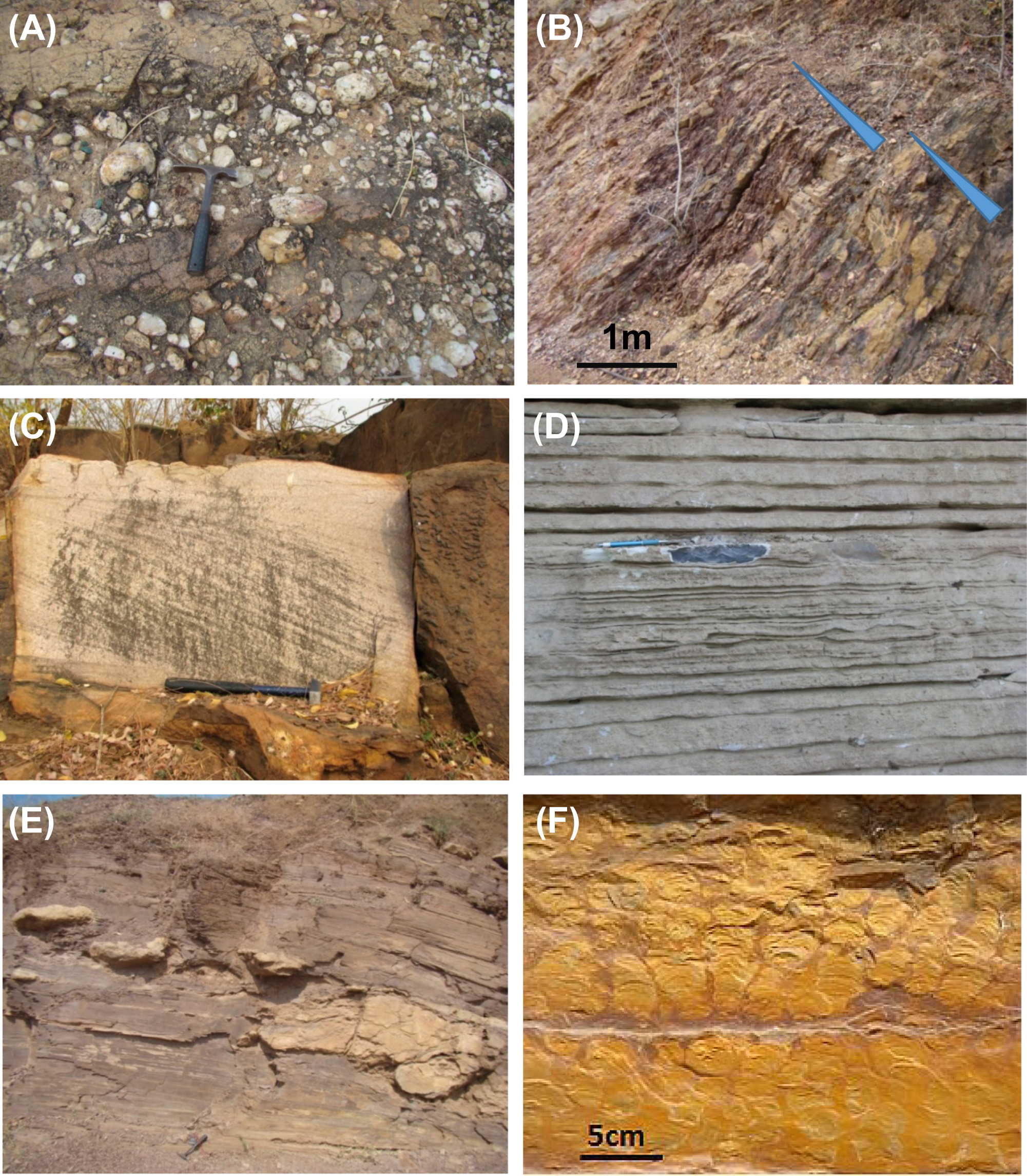Sarangarh Limestone Fm
Type Locality and Naming
Lower formation (2 of 5) of Raipur Gr. The Sarangarh/Charmuria Limestone occurs as an extensive platform overlying the Kansapathar Sandstone Fm through a transitional zone of brown shale, the Bijepur Shale Fm.
Synonym or equivalent: Charmuria Limestone Fm
Lithology and Thickness
Limestone. Flaggy limestone with mixed siliciclastic-carbonate (Fig. – image D). The platform is totally devoid of algal stromatolite or any related type of microbial laminites. Characterized by a remarkable color defined intervals, brown to gray to black to mauve in an ascending order, with the same order of superposition in different sections. The brown and gray intervals show significant admixture of siliciclastic sands, either as dispersed grains within micrites or as thin laminae intercalated with sandy carbonates or as small isolated sandstone lenses enclosed within limestones. The black and the mauve intervals, by contrast, are marked by virtual absence of sand-silt grade siliciclastics. The sand-free, below storm wave base deposits of black limestone points to maximum flooding level, which is being used as line of interbasinal and intrabasinal correlation.
[Figure: Chattisgarh basin Field photographs illustrating lithology and sedimentary structures. (A) Lohardih Fm - Poorly sorted, matrix supported ungraded, conglomerate. Note the occurrence of large fairly rounded clast with relatively smaller angular clasts. (B) Gomarda/Lohardihe Fm - Sand-mud heterolithic rocks. Note the successive fining upward cycles marking cyclic change in depositional environment. (C) Kansapathar Sandstone Fm - Cross-stratified sandstone. (D) Sarangarh Limestone Fm (Charmuria Limestone Fm) - Limestone-marl rhythmite. Bed thickness: 2-10 cm and separated by mm thin marl layer. (E) Gunderdehi Shale Fm - Upper part of with stromatolite bioherms appearing as isolated pockets. (F) Saradih Limestone Fm (Chandi Limestone Fm) - Stromatolitic limestone. Note that stromatolite columns are nonbranching and branching with two to six branches. Column height 5-15, width 1-3 cm. (from Saha et al., 2016)]
Relationships and Distribution
Lower contact
Underlain by the Bijepur Shale Fm
Upper contact
Overlain by Gunderdehi Shale Fm
Regional extent
GeoJSON
Fossils
Age
Depositional setting
Non-rimmed carbonate platform (ramp)
Additional Information
